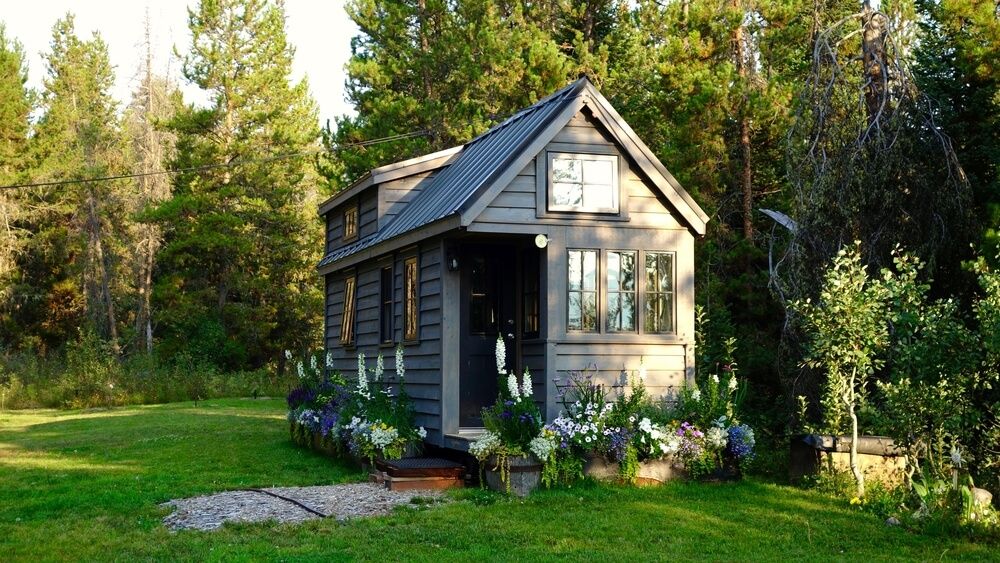The tiny home movement has captured the imagination of many who seek simplicity, sustainability, and efficient living. Despite their diminutive size, tiny homes are marvels of design, offering creative solutions to maximize space without sacrificing comfort. This article explores the various aspects of tiny home designs, highlighting key features, design principles, and the benefits of living small.

Key Features of Tiny Home Designs
Multi-Functional Spaces
One of the hallmarks of tiny home designs is the use of multi-functional spaces. Furniture and fixtures often serve dual purposes. For instance, a dining table might also function as a work desk, and a sofa could convert into a guest bed. This versatility ensures that every inch of space is utilized effectively, creating a home that is both functional and adaptable.
Lofted Sleeping Areas
Lofted sleeping areas are a common feature in tiny homes. By elevating the bedroom, more floor space is available for living and dining areas. These lofts are often accessible by ladders or compact staircases that incorporate storage solutions. This design not only maximizes vertical space but also creates a cozy, private sleeping nook.
Design Principles for Tiny Homes
Emphasis on Vertical Space
In tiny home design, vertical space is as valuable as floor space. Utilizing tall cabinets, shelving, and lofts allows for ample storage and living areas without cluttering the floor. High ceilings can also make the space feel larger and more open, enhancing the overall living experience.
Open Floor Plans
Open floor plans are essential in tiny homes to create a sense of spaciousness. Minimizing walls and partitions allows for better light flow and makes the interior feel less confined. This design principle ensures that the home remains airy and welcoming despite its small footprint.
Benefits of Tiny Home Living
Financial Freedom
One of the most significant benefits of living in a tiny home is financial freedom. Tiny homes are generally more affordable than traditional houses, both in terms of initial purchase and ongoing maintenance. Lower utility costs, reduced property taxes, and minimal upkeep expenses contribute to substantial savings over time.
Environmental Sustainability
Tiny homes are inherently more sustainable than larger homes. They require fewer building materials, produce less waste, and often incorporate eco-friendly features such as solar panels, rainwater collection systems, and composting toilets. The smaller living space also encourages a minimalist lifestyle, reducing consumption and waste.
Innovative Tiny Home Designs
Scandinavian Simplicity
Scandinavian design principles, characterized by simplicity, functionality, and minimalism, are well-suited to tiny homes. These designs often feature clean lines, neutral color palettes, and natural materials like wood and stone. Large windows and strategic lighting enhance the sense of space and connect the interior with the surrounding environment.
Modern Industrial
Modern industrial tiny homes blend contemporary aesthetics with practical, rugged materials. Exposed beams, metal accents, and reclaimed wood create a stylish yet durable living space. These homes often incorporate large glass doors and windows to maximize natural light and create an indoor-outdoor living experience.
Tiny Homes on Wheels
Mobility and Flexibility
Tiny homes on wheels offer unparalleled mobility and flexibility. These homes are built on trailers, allowing owners to relocate as desired. This design is ideal for those who seek a nomadic lifestyle or want the option to change their scenery frequently. Despite their mobility, these homes are designed to withstand the rigors of travel while providing all the comforts of a stationary home.
Compact Luxury
Even on wheels, tiny homes can offer a sense of luxury. High-end finishes, custom cabinetry, and state-of-the-art appliances ensure that mobile living doesn’t mean sacrificing comfort or style. Designers often focus on optimizing every detail to create a compact yet opulent living environment.
Conclusion
Tiny home designs exemplify the principles of efficient living, sustainability, and creativity. By prioritizing multi-functional spaces, vertical living, and open floor plans, these homes provide a comfortable and stylish alternative to traditional housing. Whether stationary or on wheels, tiny homes offer financial freedom, environmental benefits, and the opportunity to live a simpler, more intentional life. As the tiny home movement continues to grow, innovative designs will undoubtedly push the boundaries of what small living can achieve.